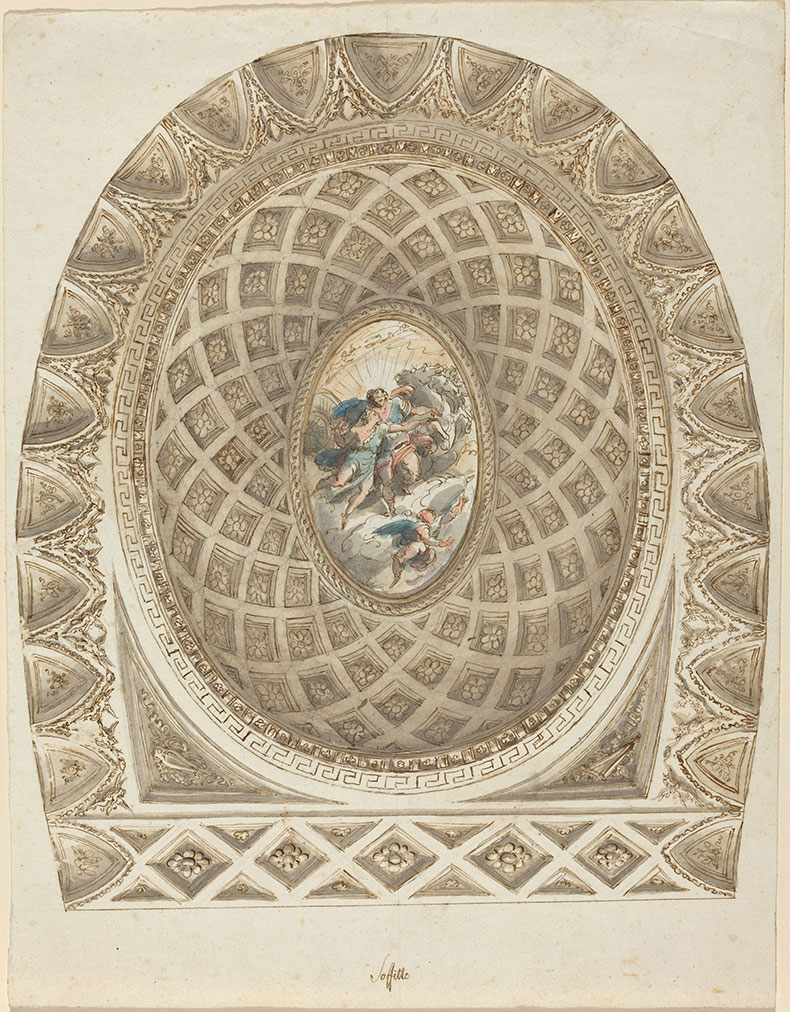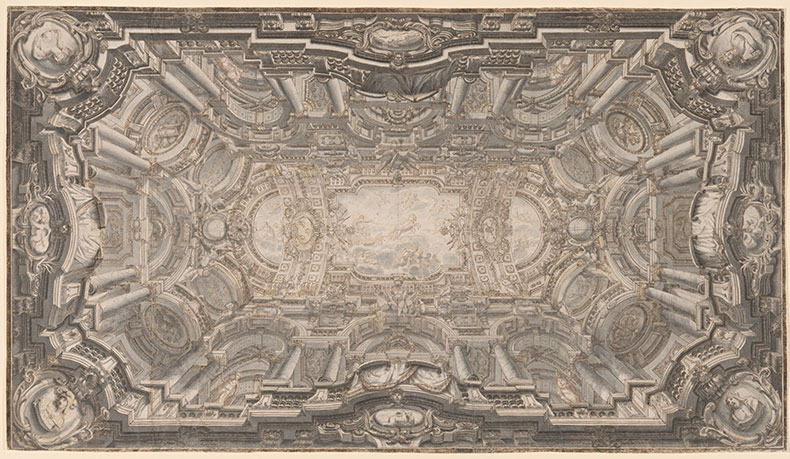The National Gallery of Art in Washington, D.C. explores the lost art of European ceiling decoration from the baroque era to the neoclassical period (29 January–9 July). A display of more than 30 drawings and preliminary sketches reveals how the art of frescos evolved from the figurative paintings popularised during the Italian Renaissance to the complex, geometric designs of the neoclassicists, represented by works such as Ferdinando Galli Bibiena’s Grand Illusionistic Ceiling (c. 1720–40). The finer details of large-scale compositions are captured by smaller sketches such as Taddeo Zuccaro’s A Man Seen from Behind (c. 1555), while works such as Giulio Cesare Procaccini’s Ceiling Studies of a Prophet and a Putto Seen from Below (c. 1602) show how the artist attempted to cater for viewers who would be craning their necks upwards. Find out more on the NGA’s website.
Preview below | View Apollo’s Art Diary
A Man Seen from Behind [recto] (c. 1555), Taddeo Zuccaro. National Gallery of Art, Washington, D.C.

A Coffered Dome with Apollo and Phaeton (c. 1787), Felice Giani. National Gallery of Art, Washington, D.C.

A Grand Illusionistic Ceiling (1720–40), Ferdinando Galli Bibiena. National Gallery of Art, Washington, D.C.




